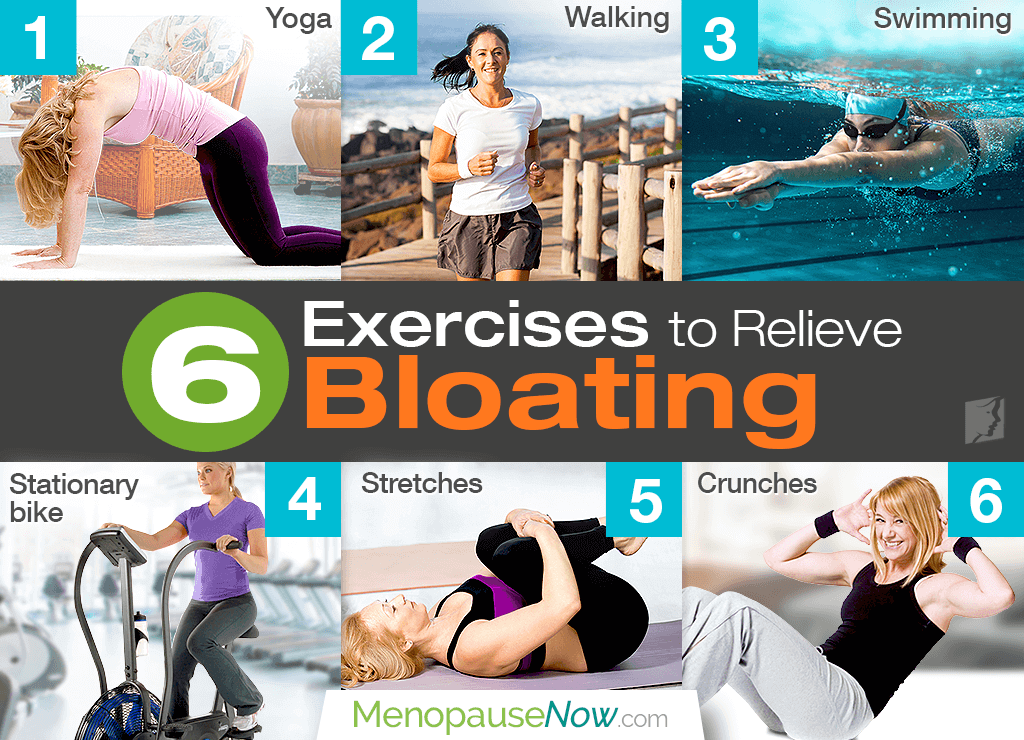Abdominal bloating is one of the common menopause symptoms, either from water retention or increased intestinal gas, or both. Luckily, for women suffering from a distended stomach, there are a variety of exercises to relieve gas and bloating that can be partaken in.
Continue reading to discover our top six exercises to relieve bloating so that you can find ultimate relief the natural way.
Yoga
Women may partake in yoga to reduce bloating caused by intestinal gas as it helps stretch the digestive organs and abdominal muscles as well as improve blood circulation1. Some poses that could be of use include camel, cat-cow, extended puppy, sitting half spinal twist, or child's poses.
Walking
Walking is an ideal, low-impact exercise to get rid of bloating. Mild activity, such as walking or jogging, helps increase gas passage and prevent its retention, especially in those who suffer from irritable bowel syndrome (IBS). More vigorous forms of exercise, such as running, may have a negative effect on bloating.
Swimming
Similar to walking, swimming is also a low-impact therapy that has been acclaimed throughout the years for its various health benefits, among them being alleviating stress. Stress is a known trigger of stomach discomforts, including bloating and IBS.
Stationary Bike
A small study found that physical exercises to relieve bloating - such as using a stationary bike - can encourage the clearance of intestinal gas and reduce bloating symptoms2. Other examples of light, physical exercises that would produce the same effects as a bicycle are the elliptical or stair climber.
Stretches
Aside from aforementioned yoga poses, there are certain stretches to relieve gas and bloating that can also easily be added into a woman's routine to massage and stimulate the colon, thus alleviating digestive discomforts. Options include seated spinal twists, seated forward bend, and knees-to-chest. Remember to control breathing throughout each stretch.
Crunches
A cousin to sit-ups, crunches not only work the abdominal muscles, but they also help push excess gas out of the digestive system. However, try not to overdo them. Start with just three sets of 12 two to three times a week alongside other exercises for a bloated stomach.
Recommendations
Without a doubt, suffering from bloating can certainly have a negative impact on a woman's day-to-day life, causing her discomfort at the most inopportune times.
So, aside from these exercises for bloating, women should also try to minimize the amount of time lying down during the day as gas retention is found to improve in an upright position2.
However, for long-term relief, it is necessary to treat the underlying condition at fault. For otherwise healthy menopausal women, the culprit is hormonal imbalance. Click on the following link to learn all about natural and effective bloating treatments that focus on promoting optimal endocrine system health for a forever healthy gut.
Sources
- Canadian Society of Intestinal Research. (2012). Physical Activity and GI Health. Retrieved September 19, 2019, from https://badgut.org/information-centre/a-z-digestive-topics/physical-activity-and-gi-health/
- Department of Health & Human Services: State Government of Victoria. (2013). Swimming - health benefits. Retrieved September 19, 2019, from https://www.betterhealth.vic.gov.au/health/healthyliving/swimming-health-benefits
- John Hopkins Medicine. (n.d.). Bloating: Causes and Prevention Tips. Retrieved September 19, 2019, from https://www.hopkinsmedicine.org/health/wellness-and-prevention/bloating-causes-and-prevention-tips
- Office on Women's Health. (2019). Irritable bowel syndrome. Retrieved September 19, 2019, from https://www.womenshealth.gov/a-z-topics/irritable-bowel-syndrome
- Sullivan, S.N. (2012). Functional Abdominal Bloating with Distention. ISRN Obstetrics and Gynecology, 2012, 721820. doi: 10.5402/2012/721820
Footnotes
- Woodyard, C. (2011). Exploring the therapeutic effects of yoga and its ability to increase quality of life. International Journal of Yoga, 4(2), 49-54. doi: 10.4103/0973-6131.85485
- Lacy, B.E. et al. (2011). Pathophysiology, Evaluation, and Treatment of Bloating. Gastroenterology & Hepatology, 7(11), 729-739. Retrieved September 19, 2019, from https://www.ncbi.nlm.nih.gov/pmc/articles/PMC3264926/




